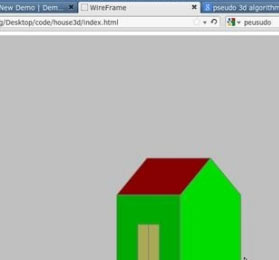POJ 1915 Knight Moves 双向BFS 入门_编程语言综合
2015-01-07 22:25:30
[小 大]
已经帮助:人解决问题
Description
- Background
Mr Somurolov, fabulous chess-gamer indeed, asserts that no one else but him can move knights from one position to another so fast. Can you beat him?
The Problem
Your task is to write a program to calculate the minimum number of moves needed for a knight to reach one point from another, so that you have the chance to be faster than Somurolov.
For people not familiar with chess, the possible knight moves are shown in Figure 1.
Input
The input begins with the number n of scenarios on a single line by itself.
Next follow n scenarios. Each scenario consists of three lines containing integer numbers. The first line specifies the length l of a side of the chess board (4 <= l <= 300). The entire board has size l * l. The second and third line contain pair of integers {0, ..., l-1}*{0, ..., l-1} specifying the starting and ending position of the knight on the board. The integers are separated by a single blank. You can assume that the positions are valid positions on the chess board of that scenario.Output
For each scenario of the input you have to calculate the minimal amount of knight moves which are necessary to move from the starting point to the ending point. If starting point and ending point are equal,distance is zero. The distance must be written on a single line.Sample Input
12345678910380 07 01000 030 50101 11 1Sample Output
1234567891011121314151617181920212223242526272829303132333435363738394041424344454647484950515253545556575859606162636465666768697071727374757677787980818283848586878889909192939495969798991001015280<strong>题意:给一个N*N的棋盘,并给出起点终点的x y坐标 球起点到终点的最小步数。</strong>双向BFS代码:<pre class="brush:java;">#include<iostream>#include<cstdio>#include<queue>#include<cstring>#define qq 330using namespace std;int vis1[qq][qq]; //既标记路径 也统计步数int vis2[qq][qq];int fx1[8]={2,2,-2,-2,1,1,-1,-1};int fx2[8]={1,-1,1,-1,2,-2,2,-2};struct node {int x,y;}start,end; //双向BFS的两端起点int sx,sy,ex,ey;int m;bool inside(int xx,int yy) //判断越界{if(xx>=0&&yy>=0&&xx<m&&yy<m) return="" true;="" else="" false;="" }="" void="" dbfs()="" {="" int="" i,tq,tw;="" queue<node="">q,w; //两个队列start.x=sx;start.y=sy;end.x=ex;end.y=ey;q.push(start);w.push(end);vis1[sx][sy]=0; //后面的步数是从0开始加的vis2[ex][ey]=0;while(!q.empty()&&!w.empty()){node now,next;tq=q.size(); //为了先将一个队列的全部判断完while(tq--){now=q.front();q.pop();if(inside(now.x,now.y)&&vis2[now.x][now.y]!=-1) //两端开始的都经过这一点。。{printf("%dn",vis1[now.x][now.y]+vis2[now.x][now.y]);return;}for(i=0;i<8;i++){next.x=now.x+fx1[i];next.y=now.y+fx2[i];if(inside(next.x,next.y)&&vis2[next.x][next.y]!=-1) //重要,,因为奇数步时。。。{printf("%dn",vis1[now.x][now.y]+1+vis2[next.x][next.y]);return;}if(inside(next.x,next.y)&&vis1[next.x][next.y]==-1){vis1[next.x][next.y]=vis1[now.x][now.y]+1;q.push(next);}}}tw=w.size();while(tw--) //同上{now=w.front();w.pop();if(inside(now.x,now.y)&&vis1[now.x][now.y]!=-1){printf("%dn",vis1[now.x][now.y]+vis2[now.x][now.y]);return;}for(i=0;i<8;i++){next.x=now.x+fx1[i];next.y=now.y+fx2[i];if(inside(next.x,next.y)&&vis1[next.x][next.y]!=-1){printf("%dn",vis2[now.x][now.y]+1+vis1[next.x][next.y]);return;}if(inside(next.x,next.y)&&vis2[next.x][next.y]==-1){vis2[next.x][next.y]=vis2[now.x][now.y]+1;w.push(next);}}}}}int main(){int t;scanf("%d",&t);while(t--){scanf("%d",&m);scanf("%d%d%d%d",&sx,&sy,&ex,&ey);memset(vis1,-1,sizeof(vis1)); //标记为未走过memset(vis2,-1,sizeof(vis2));dbfs();}return 0;}</m&&yy<m)></cstring></queue></cstdio></iostream></pre><br>双向BFS的精髓在于从起点终点同时开始搜索 当找到一点同时两端都经过时 即找到最短路径。。<br><br>
(责任编辑:)




